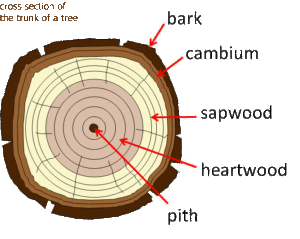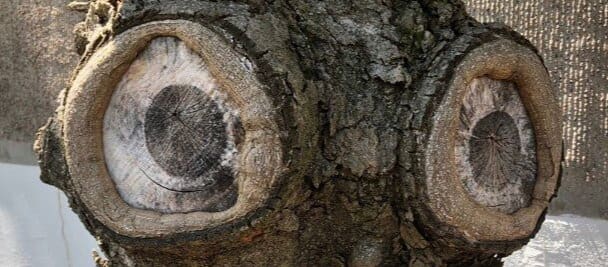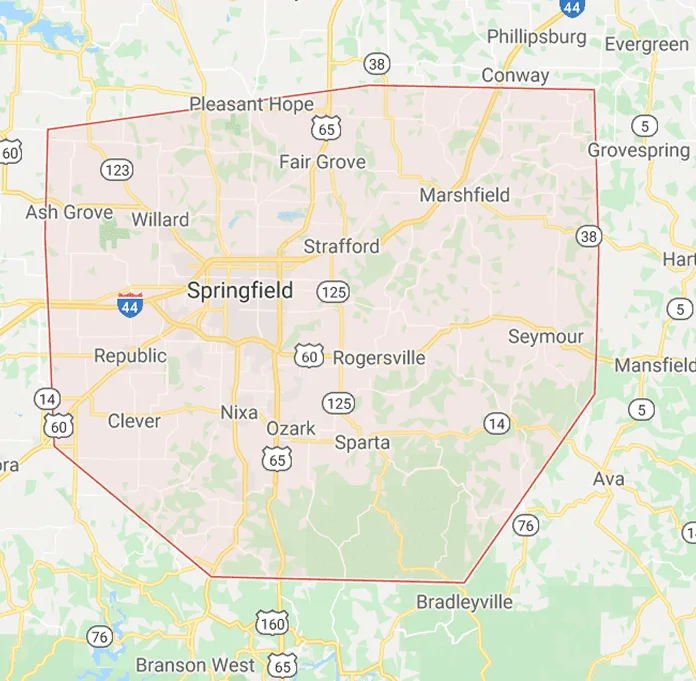For humans, the most natural thought in the world would be grab a band aid or bandage to stop the bleeding and to cover a wound to avoid further infections. This may be news to you, but there are some significant differences between trees and humans! The main thing to say about humans is that some of them like to make a profit while selling products that are supposed to help trees, but may actually spell a tree’s eventual doom.
I guess for the average person who hasn’t been confronted with information about how trees compartmentalize their ‘wounds’, it would be a pretty natural reaction to be concerned about all of the sap dripping out, as if the tree were losing its life blood. But a tree doesn’t really heal a wound, it encloses it in a process that is called compartmentalization. To make a very long story short, synthetic, often petroleum based pruning sealers will stop the tree from being able to grow over the cut area. It isn’t a case that they could never be useful, only that most often they are detrimental.
For the quick reader, the reason you don’t see us using sealer on everything we cut is because we are protecting the tree’s natural `ability to compartmentalize and grow around the dying part of the tree. Since trees were created with the ability to do this, a healthy tree will have no problem taking care of this process without you worrying any more about it!

Natural Pruning Sealer
Many of the pruning sealers on the market claim to be natural, and include ingredients such as collagen and aloe gel. The question is if these ingredients actually make a difference in the first place, but secondly, and most importantly, are often mixed with petroleum-based chemicals. Some are even mixed with asphalt. These materials will affect the wounds in negative ways:
-
Asphalt, a black material, will absorb heat that can destroy the tender cells the tree produces to close its wounds
-
Petroleum-based substances prevent new developing wound closure
The Truth About Pruning Sealer
The injured tissues in a wounded tree does not repair and heal, they (try to) seal. Any substance that will prevent this from happening is not a step in the right direction. The only instance where one could argue in favor of the use sealers would be in the instance of a wound that is too big or too rough to compartmentalize.
In such cases, the sealer could serve to prevent disease or insects from attacking this spot while the tree seals it off from the inside. However, if there is a wound that large on a tree, there is a chance that this tree will eventually die. Sealer, in that situation, prolongs the life of the tree. So while it may seem intuitive to seal up the ‘wound’ left by a pruned branch, the chances are you should just let nature take its course!
The Deeper Dive into Tree Anatomy and ‘Healing’
The inner parts of the tree do not create new wood. The only part of the tree that actually grows is found on stem tips, just under the outer bark, and similar locations on the roots. A mild simplification can be seen in this diagram provided by Kidszone.ws.
The cambium layer is the only layer in the trunk where new cells are created. This can be seen in the fact that a few years after a branch is cut off, the tree begins to grow around the spot where the branch was, but there is no new growth in the center. You can see that in this picture – the branches were removed several years before this picture (From this article).

Adding a chemical-based substance that isn’t compatible with tree growth prevents the cambium layer from completing its compartmentalization of the area.
Sources:
https://s3.wp.wsu.edu/uploads/sites/403/2015/03/wound-sealer.pdf
https://hortnews.extension.iastate.edu/faq/it-advisable-paint-pruning-wounds-when-pruning-trees
http://blog.davey.com/2016/04/wait-before-you-use-pruning-sealer-on-trees



